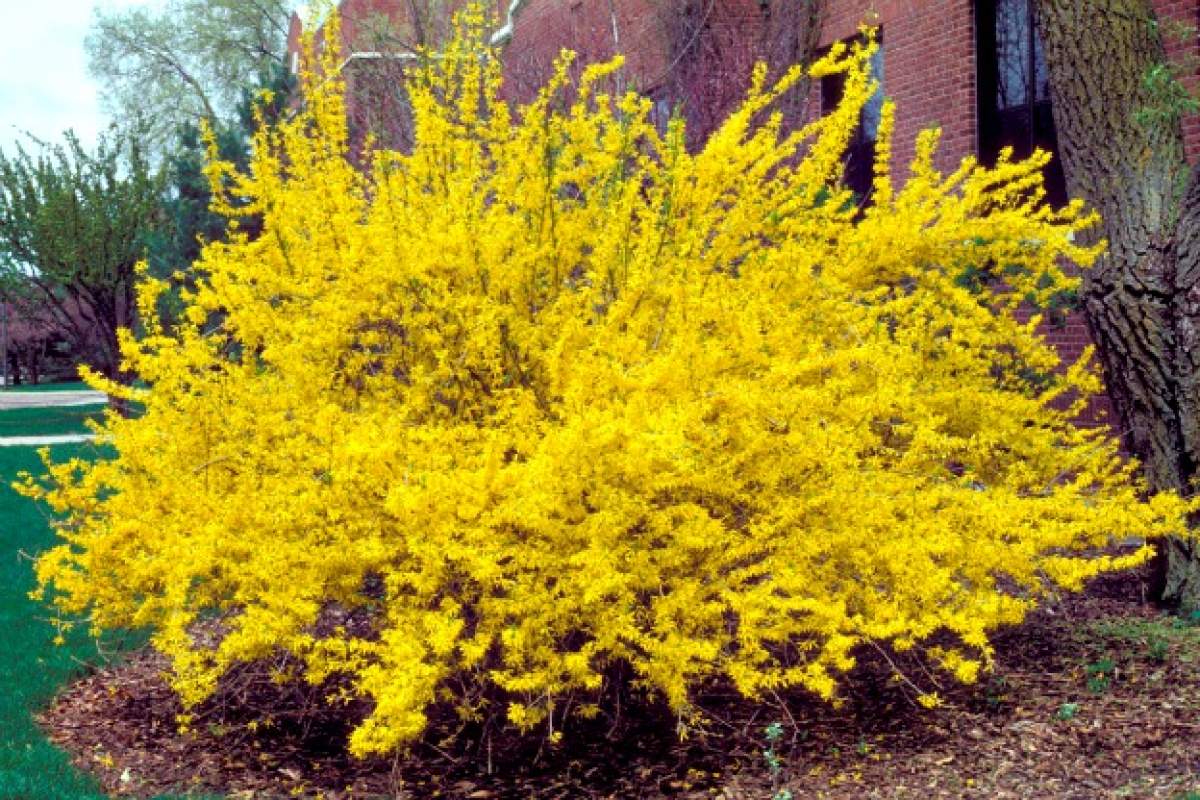
Unless you buy a dwarf, a forsythia shrub can grow to 10 feet tall with a similar spread. And if its lower branches touch the ground, each one can root and form a new plant, creating a vast colony. Then, pruning becomes almost a full time job.
- Always be sure to prune forsythia right after it blooms* each year.
- First, prune out the old, thick canes. (The new thin canes are the ones that bloom the best.)
- Cut back any branches that droop down, as they are the potential rooters.
Dig out any that have already rooted and give them away to friends or discard them. (Obviously most of us quickly run out of people who will accept forsythia plants.)
- Cut off any dead canes right at their base.
- Aim for a vase-shaped shrub with an open center so that there is good light and air circulation in the middle.
- Remember to cut all canes right to their base, as they will shoot out new canes upwards from wherever the cut is made, which is why forsythia plants often look ungainly.
While forsythia looks stunning every spring it is nondescript the rest of the year, so it is not a shrub to use lavishly in a garden. Instead, place it where it will not engulf all of its neighbors, and use the prime real estate to plant other shrubs that have interest in more than one season of the year.
*Note: Most, but not all, flowering shrubs should be pruned right after they bloom. This is because the new growth will then carry next year's flower buds.









